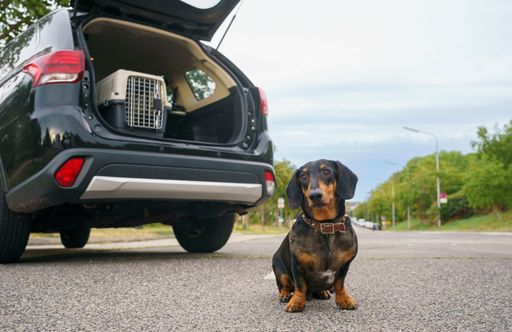According to Statista, around 766,000 dogs find homes in Austria. Many dog owners don’t leave their four-legged family members behind on a well-deserved vacation, but simply take them with them. The ARBÖ has summarized what you need to pay attention to when traveling with pets.
For long car journeys with dogs, you should, if possible, plan the journey during the cooler night or early morning hours to avoid the heat. Important: Never leave your dog alone in the car, even for short errands. Even at an outside temperature of 24 degrees Celsius, the interior of a car can heat up to over 40 degrees Celsius in a short time. This extreme heat can quickly become life-threatening for dogs. It should also be noted that the air outlets of the air conditioning are not aimed directly at the dog, as the cold air is also unhealthy for the animal.
It is also advisable to plan longer breaks so that the dog gets enough exercise. Long car journeys also mean stress for your four-legged friends, so it can help to take your own water and food bowls as well as your dog’s favorite toys with you. This ensures that the animal is well looked after during the journey and quickly feels comfortable at the holiday destination.
Transporting dogs:
There are several ways to safely transport dogs from one place to another. The ARBÖ recommends metal transport boxes that are available in different sizes. It is important that the dog has enough space, but at the same time does not have too much room to be thrown around in the event of an accident. If the animal is transported in the trunk without a box, nets and grilles are also an option. They prevent the animal from jumping forward, but pose the risk of the animal injuring itself if it brakes abruptly.
Another way to secure yourself is with seat belts. These must be tailored specifically to the dog and also require a suitable chest harness. Please note that the use of these belts on the passenger seat is not permitted. If an animal is not secured in the vehicle or not secured correctly, there are penalties that can amount to several hundred euros.
EU pet passport
When traveling within the EU and EEA, taking a pet (dogs, cats, ferrets) with you is only permitted with the EU pet passport. This ID document documents your pet’s health and contains information about vaccinations that have been carried out. The ID card confirms that the animal has been vaccinated against rabies and chipped. You can obtain the EU pet passport from all veterinarians and veterinary universities in Austria.
In some countries, additional examinations or vaccinations are required. It’s best to find out in advance which health certificates or treatments are necessary for entry in the holiday destination. Further information is available from the ARBÖ information service on 050 123 123 or on the ARBÖ website at www.arboe.at. With these tips, nothing stands in the way of a relaxing holiday with your four-legged friend.
OTS ORIGINAL TEXT PRESS RELEASE UNDER THE EXCLUSIVE RESPONSIBILITY OF THE SENDER FOR CONTENT – WWW.OTS.AT | NAR
